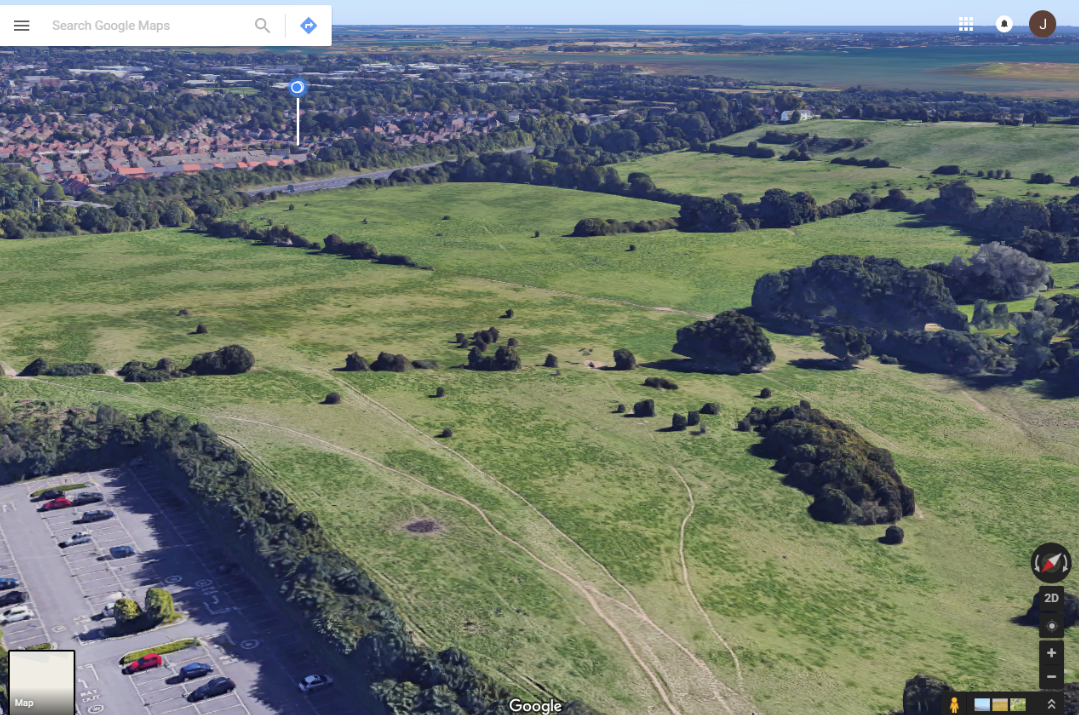The UK may be about to be separated from Europe politically but bird interest groups from both sides of the English Channel are united in their fight to save fields vitally important to over-wintering waders and geese; see objection letters from the RSPB, International Wader Study Group, Global Flyway Network and many others on Havant Council’s planning page. Every year thousands of shorebirds fly down the East-Atlantic Flyway from northern Europe to spend the winter in food-rich harbours and estuaries along the south coast of England.
Havant Borough Council, along with many other local authorities in the south, have been told by the Government to build thousands of new homes, in Havant’s case more than 11,000, by the year 2036. Havant is a relatively small borough just 21.4 square miles in area but it includes internationally protected shorelines around Hayling Island, Chichester Harbour and Langstone Harbour.
This Government pressure has forced HBC to consider allowing development on land that has up till now been deemed sacrosanct. What has got ornithologists in fighting mood is the proposal by developer Persimmon to build 780 new dwellings on green fields south of South Downs College between College Road, Crookhorn and the A3M motorway.

Photo: Google Earth
View looking south east from above South Downs College. The A3(M) motorway can be seen leading south towards Langstone Harbour in the distance. There are also plans to build 97 houses on the college car park shown in the foreground.
Most of the land proposed for development is an important site for wintering wildfowl and waders, specifically Dark-bellied Brent Geese (Branta bernicla bernicla) and Curlew (Numenius arquata).
The site includes fields identified within the Solent Waders & Brent Goose Strategy as Primary and Secondary sites of importance to feeding Brent Geese & Curlew, i.e. study fields H02A, H125, H106 and H113. The wet grassland at these sites currently supports populations of approximately 150 Curlew and up to 300 Brent Geese. Historically these numbers were much higher. It is wholly conceivable that, in colder winters, numbers of these birds would increase again as birds are forced to move here from more northerly parts of Europe. Whilst these areas of the application land are not directly within the harbour complex, they are a vital part of the wider eco-system and provide valuable, undisturbed feeding sites close to the harbour, especially (though not exclusively) during the high tide period. With rising sea levels it may not be possible to defend low lying nature reserves such as Farlington Marshes in which case inland support areas like Campdown will become even more important than they currently are.
The Chichester and Langstone Harbours Special Protection Area (SPA) is an internationally important wetland, both Dark-bellied Brent Goose and Curlew are specifically listed as qualifying features of that SPA. There must be, there is, a duty to protect those features.
Designated sites such as SPA and SSSIs cannot maintain wildlife populations on their own there have to be buffer strips, alternative feeding and roosting sites. Sites that allow for the vagaries of climate such as storm surges, flooding and disturbance factors. Mitigation sites must be equally appropriate and resilient. One field is not the same as another. The land at Campdown is used by these birds because it provides the right feeding conditions, available food with minimal disturbance. The proposed mitigation site at Broadmarsh Coastal Park, a former land-fill site, does indeed have grassland but of a completely different type to the wet grassland at Campdown. If it was suitable the birds would already use it but there aren’t any records of them doing so. Furthermore, a heavily used recreational area, is not an area that is likely to be attractive to wildfowl and waders.
Broadmarsh Coastal Park is owned by Havant Borough Council and the proposal is to fence off 1.3 hectares to give the waders and geese a sense of security. Due to the uncertainty of success around the creation of replacement habitat, experts in the field of shorebird conservation apply a ratio of 2:1 as being a necessary requirement, therefore this small area is inadequate in size and quality for the loss of 31 hectares at Campdown.
The suggested idea of creating scrapes on top of a land-fill site (which has presumably been capped with clay) seems bizarre and would be unlikely to be used for feeding by geese or curlew and would therefore not actually provide any mitigation for the loss of grassland feeding for those two species.
We are used to seeing flocks of 200 and more Brent geese feeding on our playing fields at high tide, they seem quite tolerant of us so long as we keep our dogs on their leads however the same can’t be said of our over-wintering curlew. Curlews are a shy, unassuming family of birds. Their mottled-brown plumage makes for effective camouflage against their marshland and mudflat feeding grounds, meaning they can go about their business unnoticed, prying out invertebrates such as ragworms with their purpose-built curved bills. But if, like the curlews, you take time to dig beneath the surface, you’ll discover that they are beautiful and remarkable birds.
Our curlew, the Eurasian Curlew (Numenius arquata), is a member of the bird family Numeniini, which is a tribe of large waders that include curlews and godwits. Unfortunately, national bird monitoring schemes show breeding populations are declining sharply across much of their range. In 2008, curlews were deemed of global conservation concern and became listed as ‘Near Threatened’ on the IUCN ‘Red List’ of Threatened Species.
Steep declines have been particularly evident in the UK. Between 1995 and 2012, the breeding populations declined by 55 per cent in Scotland and 30 per cent in England. Elsewhere in the UK, the population has declined by 81 per cent in Wales (between 1993 and 2006) and by 82 per cent in Northern Ireland (between 1985-87 and 2013).
In summary, wildlife conservationists of all disciplines whole-heartedly object to this planning application. We believe it will be highly detrimental to qualifying features of the SPA. It creates further fragmentation of hugely important wildlife habitats. SPAs are among THE most important wildlife habitats we have. They and their all-important qualifying features need as much support and protection as possible and this must include adjacent linked or associated sites and buffer strips. Protect Campdown and refuse this application. The closing date for comments has been extended to 13th February 2020.
by Jim Graham
Winter wader and Brent Goose recorder at Campdown since 2012

Follow Havant FOE